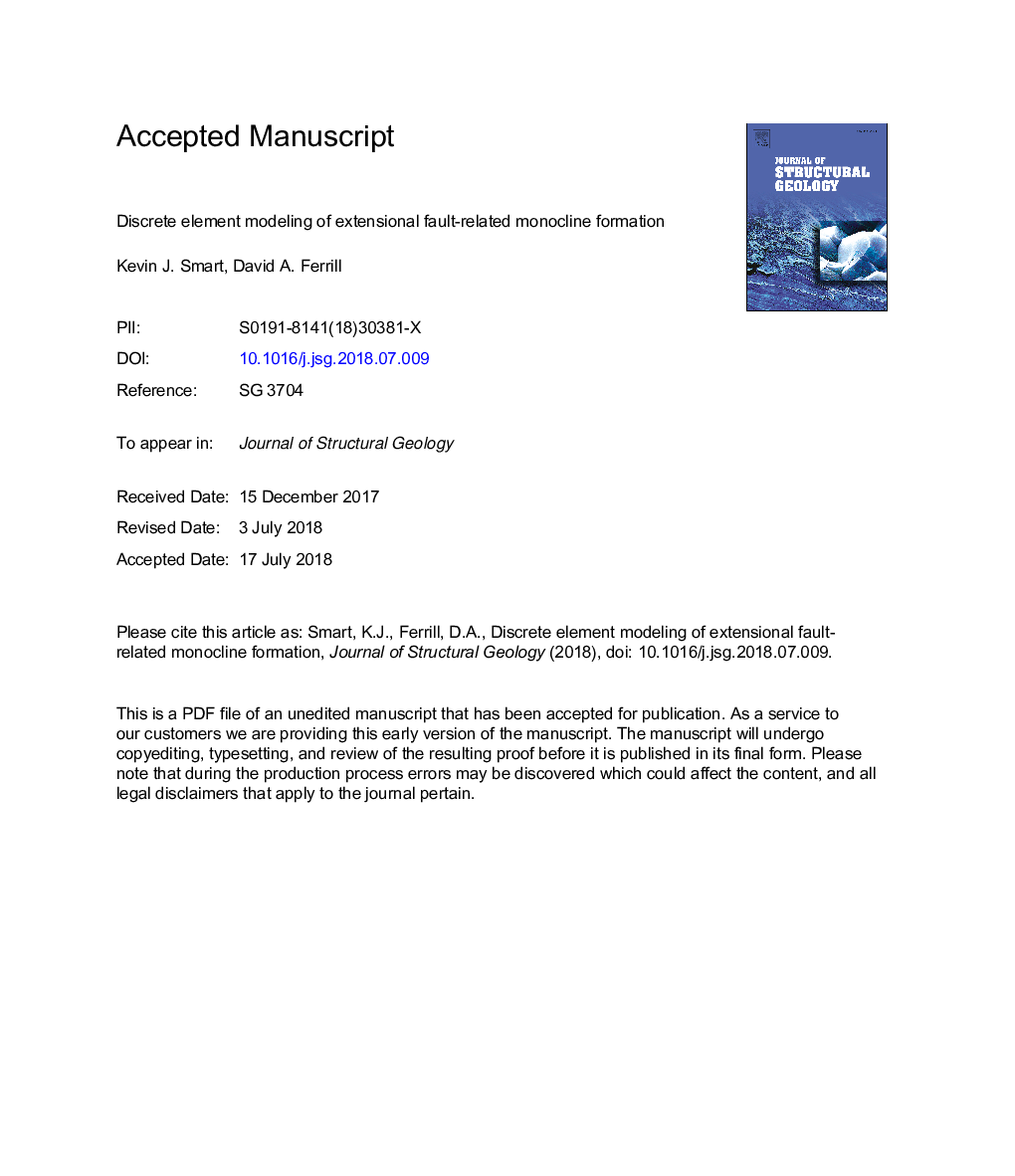| Article ID | Journal | Published Year | Pages | File Type |
|---|---|---|---|---|
| 8914335 | Journal of Structural Geology | 2018 | 38 Pages |
Abstract
The interplay of faulting and folding has long been recognized in extensional systems and numerous investigations have documented the importance of mechanical layering on development of normal-fault related monoclines. In this study we use discrete element modeling to explore the impact of mechanical layering and fault geometry on normal-fault related folding for a well-exposed field example in southwestern Iceland. The model honors the mechanically stratified character of the deformed sequence and replicates the monocline geometry by simulating displacement and upward propagation of a buried fault. A close match between model geometry and field observations was obtained using a refracted fault geometry and a cover sequence with alternating 40-m-thick relatively strong and 10-m-thick relatively weak layers. Initial deformation is accommodated by folding of mechanically weaker intervals and fracturing of mechanically stronger layers, and maximum monocline width is developed early. As overall fault displacement increases, throughgoing fracture connections along the footwall side of the monocline develop, leaving the monocline limb attached to the hanging wall. Consistent with field observations, model results suggest that significant near-surface and subsurface fracture porosity is developed in strong layers. Reproducing the complexity of the natural normal fault-related monocline in Iceland requires incorporating strongly contrasting mechanical properties within a layered cover sequence.
Related Topics
Physical Sciences and Engineering
Earth and Planetary Sciences
Geology
Authors
Kevin J. Smart, David A. Ferrill,
